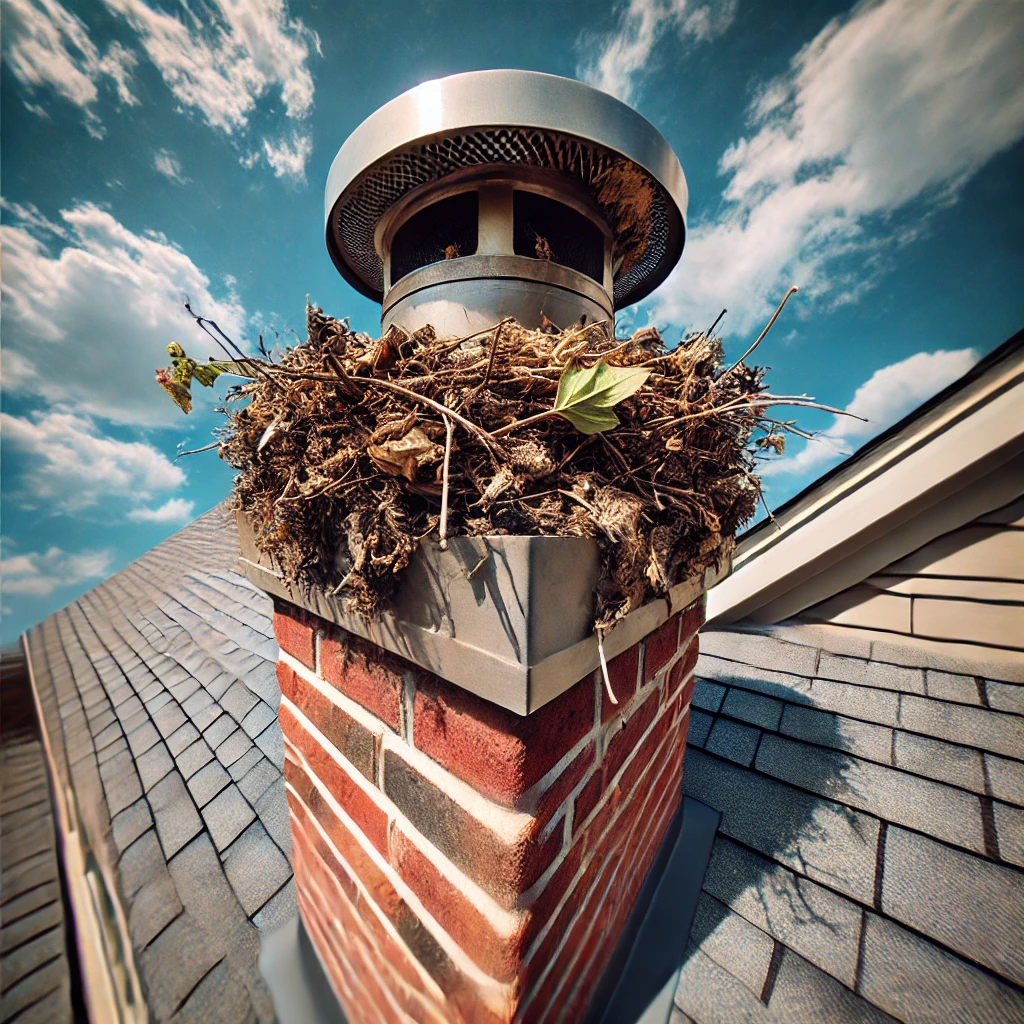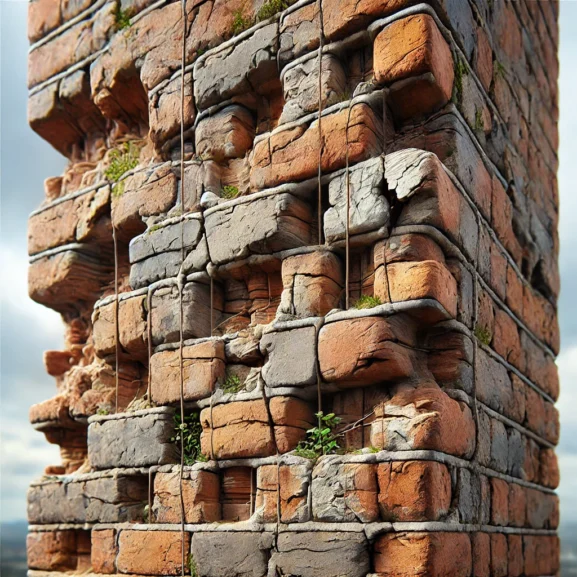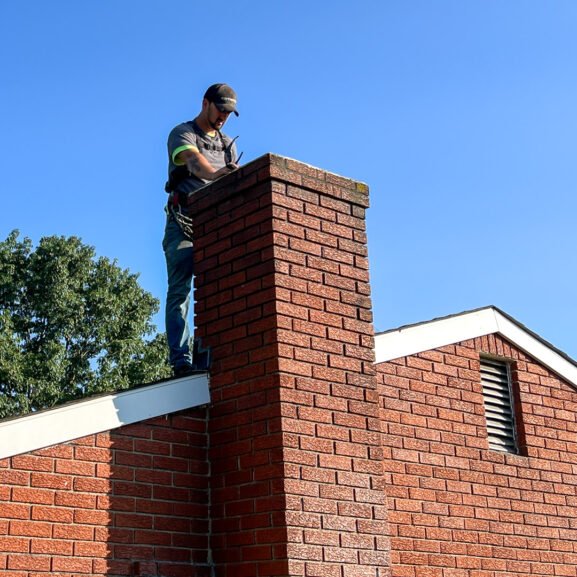Prevent Draft Issues Due to Chimney Cap Obstructions: Expert Tips & Solutions
When the cozy glow of a fireplace turns into smoke, chimney cap obstructions might be to blame. These blockages can cause draft issues, making it hard for smoke and gases to exit properly. When we gather around the fire, we should know how chimney caps help keep our home safe. They also improve the efficiency of the chimney.
Chimney caps protect against debris, animals, and weather, helping our chimneys work smoothly. But when they get clogged or damaged, they can block airflow. This causes smoke to back up into our living spaces. Not only is this uncomfortable, but it can also be dangerous because harmful gases build up.
In this text, we’ll look at the common causes of chimney cap blockages and how to fix them. By finding and fixing these problems, we can keep our fireplaces warm. This makes them more enjoyable to use.
Chimney Cap Obstructions: Common Causes and Easy Solutions
Chimney cap obstructions can cause draft issues. This leads to poor airflow. Keeping your chimney in good condition is important. The changing seasons can impact chimney performance. Regular maintenance helps keep your chimney working well.
What Causes Obstructions?
Obstructions in chimney caps often come from various sources.
- Debris Accumulation: Leaves, twigs, and other debris can block the flue. This affects the chimney draft.
Animal Nests: Birds and squirrels like to build nests in chimney caps. This blocks airflow. It can also cause smoke to backdraft into the home.
Creosote Buildup: Burning unseasoned wood causes creosote to build up. Creosote is a sticky substance that blocks airflow. It is also a fire hazard.
Snow and Ice: Winter weather brings snow and ice. These can build up and cause venting problems.
Regular chimney maintenance helps prevent these issues. Consult with a professional for a free evaluation to ensure your chimney is properly cleaned and draft control is managed. For more information on fire safety with chimneys, consider resources from trusted industry organizations, visit NFPA and CSIA.
Common Types of Obstructions
Understanding the types of chimney cap issues helps in resolving them.
- Biological Obstructions: Besides animal nests, unwanted pests create blockages. They can lead to blocked flue and draft issues. Eliminating these requires professional assistance.
- Structural Defects: Rusty or damaged caps can impede airflow, leading to venting problems. These issues demand expert repairs or replacement.
- Weather-Related Barriers: Snow piles and rainwater can seep in, causing blockages.
- Human-Caused Blockades: Sometimes, caps get dislodged during roof work, obstructing the chimney.
Regular checks and cleaning prevent many of these obstructions. Need help tackling chimney cap issues? Reach out to professionals for consultation.
Impact of Chimney Cap Obstructions on Draft
Chimney cap obstructions can ruin a cozy night by the fireplace. They cause smoke to fill the room. These blockages stop proper airflow. As a result, venting problems occur.
How Obstructions Affect Draft
Obstructions in chimney caps can cause serious draft issues. When debris or animal nests block the cap, airflow is restricted. This blockage prevents smoke from escaping properly. As a result, smoke can backdraft and affect fireplace performance. Draft problems can also occur when the cap gets clogged. This can happen because of creosote buildup or seasonal blockages, like snow. This is especially common in areas, where the weather changes often. Without proper draft control, bad odors and dangerous gases can enter your home.
Symptoms of Poor Draft
It’s important to recognize signs of a poor chimney draft. You may notice smoke coming into the room instead of rising up the flue. Fires may also burn slowly. If your room fills with smoke more than last year’s turkey disaster jokes, it’s time to check the chimney. Condensation on the walls and windows can also be a sign. Draft control is serious. If you notice these issues, it’s important to act quickly. Smoke odors and visible soot are other clues. If any of these issues sound familiar, consult with a professional chimney expert who can provide a quick and effective solution.
Reach out to professionals for consultation or visit NFPA and CSIA for more fire safety tips. Professional chimney cleaning and maintenance services ensure your chimney is safe and ready for use, helping create a cozy and worry-free experience for you.”
Identifying Chimney Cap Obstructions

Chimney cap obstructions lead to draft problems and poor airflow. Spotting these blockages is crucial for resolving venting problems. Let’s jump into some tips and telltale signs.
Visual Inspection Tips
Regular visual inspections help identify chimney cap issues. Start by safely observing the chimney cap from a distance. Look for:
- Debris Buildup: Twigs, leaves, or other materials clogging the cap.
- Animal Nests: Birds or small animals sometimes find chimneys cozy. Cute, but not suitable tenants.
- Structural Damage: Cracks or gaps can restrict airflow and reduce chimney performance.
For safer inspections, skip balancing acts on ladders; contact professionals instead.
Signs of Blockages
Recognizing symptoms of blockages aids in maintaining chimney draft. Keep an eye out for:
- Smoke Backdraft: Smoke filling your room instead of escaping means a blocked flue.
- Slow Fires: If fires don’t burn brightly, airflow restriction might be the culprit.
- Soot Buildup: Dark streaks on walls or windows point to venting problems.
Draft control is essential for safety and comfort. Visit NFPA and CSIA for more fire safety info or reach out to us for expert chimney cleaning.
Solutions for Chimney Cap Obstructions
Keeping a chimney clear is vital for a cozy fire. Regular checks and maintenance can prevent pesky obstructions.
When to Call a Professional
Spotting chimney cap issues early is essential. If you see smoke backdraft or notice a blocked flue, it might be time to call for help. Professionals can identify and clear obstructions like animal nests or debris buildup. We can’t stress enough, draft problems need an expert touch. Many think tackling chimney cleaning solo is fun, but let’s not play Hercules.
- Regular Issues: Smoke entering living spaces, slow-burning fires, and airflow restriction.
- Most areas face challenges with the changing seasons. Snow and ice can create risks. Timely intervention is key to prevent damage.
For airy chimneys and better performance, it’s best to rely on experts. Reach out to a professional near you for a consultation.
Stay informed about fire safety with resources from the National Fire Protection Association (NFPA) and Chimney Safety Institute of America (CSIA).
Preventing Future Draft Issues
Preventing draft problems requires regular maintenance and selecting the right chimney cap. Let’s jump into some tips to keep your chimney running smoothly.
Regular Maintenance Tips
Regular chimney maintenance ensures proper airflow and prevents obstructions. Picture this: no more smoke backdraft filling the room! Here are some simple steps:
- Schedule Annual Inspections: We should have a professional inspect your chimney every year. They will look for any blockages in the chimney cap and check for structural problems.
- Check for Nests and Debris: We love animals, but not in chimneys! Regular checks avoid blocked flues.
- Monitor Creosote Buildup: Excessive creosote leads to poor airflow. Regular cleaning eliminates this risk.
Seasonal changes influence chimney performance. Being proactive helps maintain safety and efficiency. Reach out to professionals for consultation.
Choosing the Right Chimney Cap
Choosing the right chimney cap is important for solving venting issues and controlling chimney drafts.
Material is key. Stainless steel and copper caps last longer and resist weather damage. They also help reduce airflow problems.
- Consider the Screen: Finer screens keep out small animals; but, they might clog more easily.
A well-chosen cap enhances chimney performance and prevents future issues. Check out National Fire Protection Association and the Chimney Safety Institute of America for more safety tips. Contact us for professional guidance and chimney cleaning services by reaching out to professionals for consultation.
Conclusion
Addressing chimney cap obstructions is important for a safe and efficient home. Understanding the causes and signs of draft issues is important. This helps us keep our chimneys working properly. Regular inspections and maintenance can prevent blockages and other risks. We should always seek professional help for complete chimney care. This is especially important in places, where weather changes can affect how our chimneys work. Staying informed and alert can ensure we have a warm and safe fireplace. For expert assistance, reach out to a trusted professional and benefit from their reliable services.
Frequently Asked Questions
What is the primary function of a chimney cap?
A chimney cap helps protect the chimney from debris, rain, and animals. These things can block the chimney and reduce draft efficiency. The cap also keeps sparks from escaping, which lowers the risk of fire. It helps maintain a healthy and efficient fireplace.
How do chimney cap obstructions affect home safety?
Obstructions in chimney caps can block the flue. This causes smoke and harmful gases to back up into living spaces. It can create serious health risks. It can also lead to poor air quality. Keeping the chimney cap clear is important. It ensures safe fireplace use.
What are common causes of chimney cap obstruction?
Common causes are debris buildup, animal nests, creosote buildup, and weather-related barriers like snow and ice. Regular inspections help spot these issues early. This way, we can fix them before they affect chimney efficiency.
How can I identify signs of poor chimney draft?
Signs of a poor draft include smoke entering your home, slow-burning fires, condensation on the walls, and visible soot or creosote. It’s important to notice these signs. They help ensure proper airflow and keep your home safe.
Why is professional chimney maintenance important?
Professional maintenance keeps your chimney clean and working well. Experts know how to control drafts and ensure efficiency. They have the right tools to safely remove any obstructions. This helps prevent problems that could arise from trying to fix things yourself.
How often should I schedule chimney inspections?
We recommend annual inspections to keep your chimney in great shape. Regular check-ups help spot and fix any blockages or damage early. This can prevent bigger problems down the road.
What materials are best for chimney caps?
Stainless steel and copper are great choices for chimney caps. They are durable and can resist weather damage. This helps improve airflow. These materials also make the cap last longer.
What precautions can prevent future chimney draft issues?
To keep your chimney safe and efficient, schedule yearly inspections. Remove debris and nests as soon as possible. Control creosote buildup to prevent problems. Choose a strong, durable chimney cap. These steps will help ensure your chimney stays in good condition.
Why should I avoid DIY chimney cleaning?
DIY chimney cleaning doesn’t offer the same thoroughness or safety as professional services. Experts ensure that debris is removed effectively. They also help reduce draft problems. Professional cleaning minimizes health and safety risks when using your chimney.
How can I learn more about chimney safety?
You can find helpful resources from organizations like the National Fire Protection Association (NFPA) and the Chimney Safety Institute of America (CSIA). These groups offer valuable information to help keep your home safe. These groups offer important information. It helps you keep your fireplace system safe and efficient.


